Text
Effective Home Remedies to Eliminate Rats
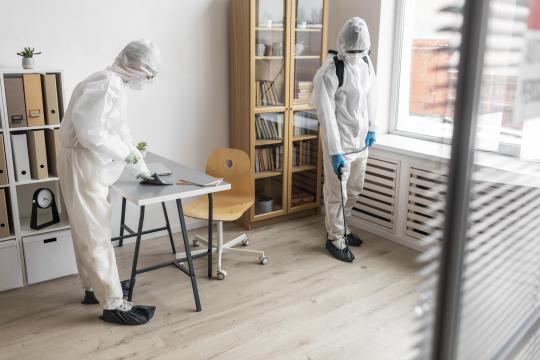
Discover effective home remedies to combat rat infestations while considering rat control services. From sealing entry points to using peppermint oil as a natural deterrent, these DIY solutions can aid in eliminating rats from your home. Explore humane traps and strategically placed bait stations to manage rat populations effectively. Additionally, maintain cleanliness to remove food sources and reduce attractants for these pests. For persistent infestations, consider seeking professional Rat Control Services to implement comprehensive solutions tailored to your specific needs. With a proactive approach and the right techniques, you can reclaim your home from unwanted rodent visitors:
Peppermint Oil: Rats dislike the smell of peppermint oil. Soak cotton balls in peppermint oil and place them in areas where rats frequent, such as corners, entry points, or near food sources.
Mothballs: Mothballs contain naphthalene, which repels rats. However, be cautious as they are toxic to humans and pets. Place them in areas where rats are present but inaccessible to children and pets.
Ammonia: Rats dislike the strong smell of ammonia. Mix 2 cups of ammonia with 200ml of water and 2-3 spoons of detergent. Place this mixture in bowls near rat-infested areas.
Bay Leaves: The strong scent of bay leaves repels rats. Place them in rat-prone areas or crush them into a powder and sprinkle it around the house.
Pepper: Sprinkle black pepper around rat holes and entry points. The strong smell irritates rats and keeps them away.
Onions: Rats are repelled by the smell of onions. Place slices of onions near rat holes or in areas where rats are active.
Cat Litter: Used cat litter can act as a deterrent since rats can smell the scent of cats and will avoid areas where they sense a predator's presence.
Ultrasonic Repellents: These emit high-frequency sound waves that are unpleasant to rats but are typically undetectable to humans. Place them in areas where rats are active.
Seal Entry Points: Identify and seal any holes or cracks in walls, floors, and foundations that rats may be using to enter your home.
Maintain Cleanliness: Keep your home and surroundings clean, removing any potential food sources or hiding places for rats.
Traps: Traditional snap traps or humane live traps can also be effective in capturing rats. Use baits like peanut butter, chocolate, or dried fruits to lure them into the traps.
Remember to be persistent and combine multiple methods for the best results. Additionally, if the infestation is severe or persistent, it may be necessary to consult with a professional Pest Control Service.
0 notes
Text
Effective Strategies To Prevent Rats From Entering Your Home
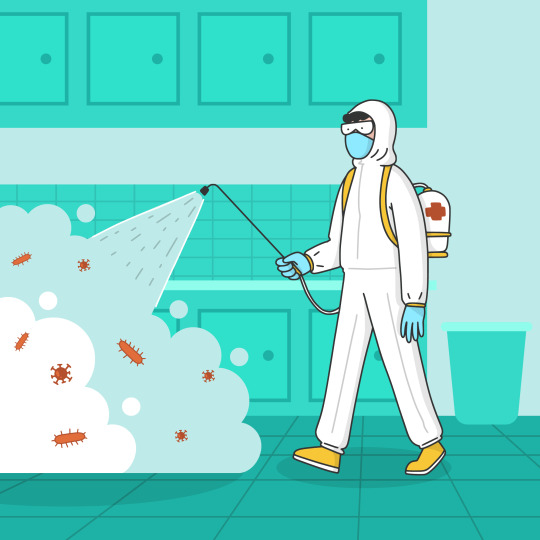
Keeping rats out of your house requires a combination of preventive measures and proactive strategies. Here are some top tips to help you keep rats away:
Seal Entry Points: Rats can squeeze through very small openings. Seal any cracks, gaps, or holes in your home's exterior walls, foundation, and roof to prevent rats from entering.
Keep Food Secure: Rats are attracted to food sources. Store food in airtight containers made of metal or thick plastic. Avoid leaving pet food out overnight, and clean up any crumbs or spills promptly.
Proper Waste Management: Keep garbage cans tightly sealed, and dispose of garbage regularly. Compost bins should be securely covered to prevent rats from accessing food scraps.
Maintain Cleanliness: Keep your home and yard clean and clutter-free. Rats are attracted to areas with hiding spots and nesting materials, so keep storage areas organized and clutter-free.
Trim Vegetation: Trim back trees, bushes, and vines that may provide rats with easy access to your home. Overhanging branches can serve as bridges to your roof.
Regular Maintenance: Regularly inspect your home for signs of rat activity, such as droppings, gnaw marks, or nesting materials. Address any issues promptly to prevent infestations from getting out of control.
Use Rat Deterrents: Consider using natural deterrents such as peppermint oil or predator urine around potential entry points to discourage rats from entering your home.
Install Rat Traps: Set up rat traps in strategic locations, especially in areas where you've noticed rat activity. Be sure to place traps along walls or in corners, as rats tend to travel along edges.
Consider Professional Help: If you have a severe rat infestation or are unable to control the problem on your own, consider hiring a professional pest control service to help eliminate the rats and prevent future infestations.
By incorporating these strategies and maintaining a watchful eye, you can significantly diminish the chances of rats infiltrating your living space. Stay proactive in safeguarding your home from potential rat infestations with these practical tips. For comprehensive protection, consider employing professional Rat Control Services to ensure thorough inspection and eradication measures are in place. With a proactive approach and expert assistance, you can effectively mitigate the risk of rat intrusions and preserve the sanctity of your home environment.
0 notes
Text
What Common Mistakes People Make During Getting Rid of Bed Bugs?
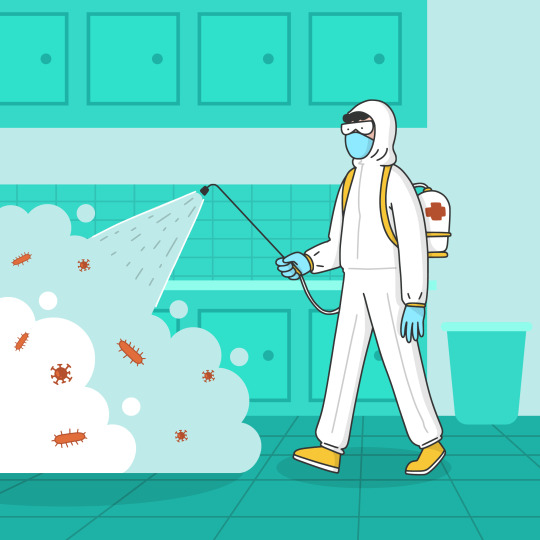
Getting rid of Bed Bugs can be a tricky process, and there are several common mistakes people make:
Incomplete Treatment: Treating only the visible areas where bed bugs are found is a common mistake. Bed bugs can hide in cracks, crevices, electrical outlets, and other hard-to-reach places. Treating only visible areas might not eliminate the entire infestation.
Using Wrong Insecticides: Some people may use insecticides that are not specifically designed for bed bugs or that are not safe for indoor use. This can be ineffective and potentially harmful to humans and pets. Always use insecticides labeled specifically for bed bug control and follow the instructions carefully.
Over-reliance on DIY Methods: While DIY methods like vacuuming, steam cleaning, and using bed bug sprays can be helpful, they may not completely eradicate a bed bug infestation, especially if it's severe. Professional pest control companies have access to more potent insecticides and equipment for thorough treatment.
Neglecting Laundering: Washing bedding, clothing, curtains, and other infested items in hot water and drying them on high heat can kill bed bugs and their eggs. Neglecting this step can allow bed bugs to survive and reinfest the area.
Not Addressing Other Infested Areas: Bed bugs can spread to other areas of the home, such as sofas, chairs, and even wall voids. Failing to inspect and treat these areas can lead to continued infestation.
Ignoring Early Signs: Some people may ignore early signs of bed bugs or delay treatment, hoping the problem will go away on its own. Bed bug infestations tend to worsen over time if left untreated, so it's essential to address the issue promptly.
Insufficient Preparation: Proper preparation before treatment is crucial for successful bed bug elimination. This includes decluttering the area, removing bedding and clothing from infested areas, and vacuuming thoroughly. Failing to prepare adequately can hinder the effectiveness of treatment.
Not Seeking Professional Help When Needed: Severe bed bug infestations often require professional intervention. Attempting to handle a severe infestation without professional help can result in wasted time, money, and frustration.
By sidestepping prevalent errors and adhering to proven Bed Bug Control methodologies, individuals can significantly boost their likelihood of eradicating these pests from their residences. Effective bed bug control strategies are pivotal for a successful campaign against these persistent insects, ensuring a thorough and lasting solution to the infestation problem.
0 notes
Text
What Safety Precautions to Take While Doing Pest Control
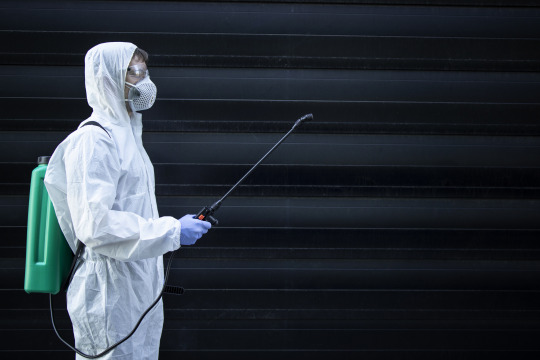
When engaging in pest control, safety should always be a top priority to protect both yourself and others. Here are some essential safety precautions to take:
Read the Labels: Before using any Termite Pest Control product, carefully read and follow the instructions on the label. Pay attention to warnings, safety guidelines, and proper application methods.
Wear Protective Gear: Wear appropriate personal protective equipment (PPE) such as gloves, long-sleeved shirts, long pants, closed-toe shoes, goggles, and a mask or respirator if necessary. This gear helps protect against exposure to chemicals and prevents skin contact.
Ventilate the Area: Ensure proper ventilation when using pest control products indoors. Open windows and doors to allow fresh air to circulate and reduce the concentration of chemical fumes.
Keep Children and Pets Away: Keep children and pets away from treated areas until the product has dried completely or for the duration specified on the label. Store pesticides and equipment in a secure location out of reach of children and animals.
Avoid Contamination: Prevent contamination of food, water, dishes, and cooking utensils by covering them or removing them from the area being treated. Wash hands and exposed skin thoroughly after handling pesticides, even if wearing gloves.
Use Proper Application Techniques: Follow the recommended application rates and methods specified on the product label. Avoid over-application, which can lead to unnecessary exposure and environmental contamination.
Dispose of Waste Properly: Dispose of empty pesticide containers, leftover products, and any contaminated materials according to local regulations. Do not pour leftover pesticides down the drain or throw them in the trash.
Store Pesticides Safely: Store pesticides in their original containers with intact labels, away from food, pet food, and other household items. Keep them in a cool, dry, and well-ventilated area, out of reach of children and pets.
Handle Chemicals with Care: Handle concentrated pesticides with care, and avoid skin contact or inhalation of fumes. Mix pesticides outdoors or in well-ventilated areas, and use appropriate measuring tools to avoid spills and accidents.
Seek Professional Help if Needed: For extensive infestations or situations where handling pesticides safely may be challenging, consider hiring a licensed pest control professional who has the expertise and equipment to address the problem safely and effectively.
By following these safety precautions, you can minimize the risks associated with Pest Control and ensure a safer environment for yourself, your family, and your pets.
0 notes
Text
How do Mosquitoes Manage Long-Distance?
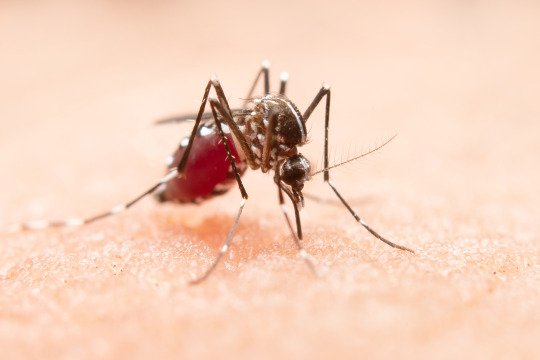
Mosquitoes, infamous for their capacity to spread diseases like malaria, dengue fever, and Zika virus, are not just carriers of affliction but also astonishing aviators capable of traversing great distances. The intricacies of their flight reveal a world of remarkable adaptations enabling them to undertake these impressive voyages across varied terrains, sometimes spanning continents. Delving into the mechanics of mosquito flight unveils a fascinating realm where these tiny insects navigate vast expanses with surprising efficiency. Exploring these mechanisms not only sheds light on their flight prowess but also underscores the challenges faced by Mosquito Control Services in managing these resilient and mobile pests.
Understanding Mosquito Flight: Mosquitoes are adept flyers, capable of hovering, accelerating rapidly, and even flying backwards. Their flight is powered by two pairs of wings that beat in sync, generating lift and thrust. However, unlike larger insects such as bees and butterflies, mosquitoes have relatively short flight ranges, typically staying within a few miles of their breeding sites. So how do they manage to cover long distances?
Wind-Assisted Flight: One of the primary ways mosquitoes travel long distances is through wind-assisted flight. These lightweight insects take advantage of prevailing winds to carry them over vast distances. By orienting themselves in the direction of the wind, mosquitoes can conserve energy and cover ground more efficiently. Studies have shown that mosquitoes can travel hundreds of miles with the help of favourable wind currents, allowing them to colonize new areas and expand their range.
Navigation and Orientation: While wind plays a crucial role in facilitating long-distance flight, mosquitoes also rely on sophisticated navigation mechanisms to reach their destinations. Like other insects, mosquitoes use a variety of cues to orient themselves during flight. These cues include visual landmarks, the Earth's magnetic field, and even celestial cues such as the position of the sun and stars.
Flight Strategies: Mosquitoes employ various flight strategies to optimize their long-distance travel. For example, they may engage in a behaviour known as "skipper flights," where they alternate between short flights and resting periods to conserve energy. By strategically timing their flights to coincide with favourable weather conditions, mosquitoes can maximize their chances of reaching distant locations.
Furthermore, mosquitoes often travel in swarms, benefiting from safety in numbers and reducing the risk of predation during their journey. This collective behaviour allows them to exploit favourable wind patterns more effectively and enhances their overall navigation abilities.
In conclusion, mosquitoes are not merely passive drifters at the mercy of the wind; they are skilled navigators capable of undertaking impressive long-distance journeys. By harnessing the power of wind-assisted flight and employing sophisticated navigation strategies, mosquitoes can traverse vast distances and colonize new habitats. Understanding the mechanisms underlying mosquito flight not only sheds light on their ecology and behaviour but also has important implications for disease transmission and vector control efforts. As we continue to unravel the mysteries of mosquito flight, we gain valuable insights into the complex interactions between these insects and the environments they inhabit.
1 note
·
View note